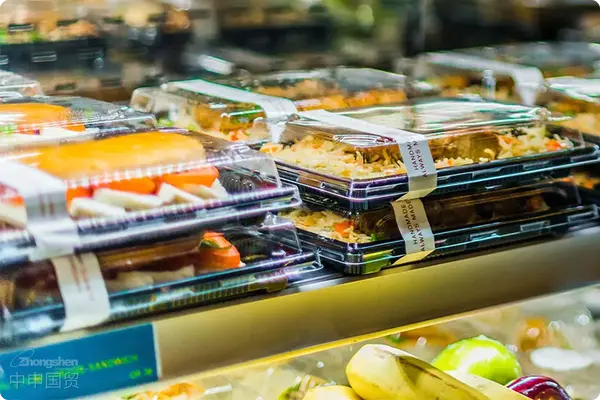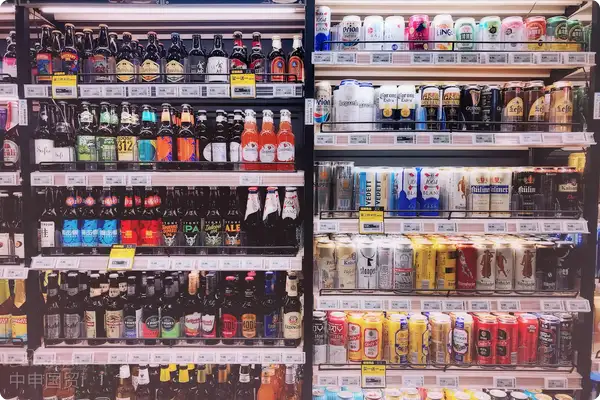- Shanghai Zhongshen International Trade Co., Ltd. - Two decades of trade agency expertise.
- Service Hotline: 139 1787 2118
Want to introduce premium coffee beans from around the world to the Chinese market but troubled by complex import qualifications, tedious documentation, strict quarantine requirements, and potential classification disputes? How to apply for Imported Food Consignee Registration? What documents are needed for overseas manufacturer registration? How to enjoy zero-tariff benefits from ASEAN countries? How to avoid quarantine risks like coffee berry borer? This article provides detailed answers, analyzing key steps from access qualification processing and label compliance services to document preparation and logistics clearance, helping you avoid risks and complete imports efficiently, making your coffee business thrive!

I. Core Content
- Handling of access qualifications
- Apply for Imported Food Consignee Registration (requires Food Business License)
- Overseas manufacturer registration (requires filing through Customs General Administration system)
- Special category approval (green coffee beans require origin access confirmation, e.g., Bolivia requires official registration)?
- Label Compliance Services
- Prepare bilingual labels (including origin country, ingredients, production date, nutritional information, etc.)?
- Label pre-approval (submit to Customs Technical Center for verification)
- Affix traceability QR code
- Preparation of document files
- Review origin countrys Phytosanitary Certificate and Sanitary Certificate,
- OrganizeIt is recommended to verify through the following methods:(Involving ASEAN countries, FORM E can be applied for zero tariff)
- Provide processing description (distinguish between unroasted/roasted, decaffeinated/non-decaffeinated)
- Logistics and Customs Clearance Services
- Maintain constant temperature during transport (avoid deterioration of coffee beans due to high temperature)
- Handle Wood Pallet Fumigation Certificate (ISPM15 standard)
- Pay comprehensive taxes and fees on behalf (8%-15% tariff + 13% VAT)
II. Operation Process
| Stage | Key operations | Define the boundary of agency responsibilities |
|---|---|---|
| Pre - preparation | Signforeign tradeContract (specify HS code, e.g. 0901210000) Pre-approve Chinese labels overseas | 3-6 months (including filing) |
| Port Clearance | Bill of lading exchange (B/L → Delivery Order) Declaration (submit contract/packing list/certificate of origin, etc.) | 1-3 working days |
| Inspection and quarantine | Sampling inspection (focus on coffee berry borer detection) Full laboratory testing (microorganisms/heavy metals) | 5-15 working days |
| Issue certificate and release goods | Apply for Inspection and Quarantine Certificate of Entry Goods, Affix Chinese labels (completed in supervised warehouse) | International Transportation |
| Market circulation | Upload blockchain traceability data (production batch → logistics tracking) Sales permitted after issuing Sanitary Certificate | Real-time synchronization |
III. Risk management key points
- Quarantine risks
- Coffee beans from Vietnam/Africa require special prevention against coffee berry borer (mandatory fumigation treatment)
- Retain 15% Payment Pending Laboratory Test Approval
- Classification dispute
- Accurately distinguish HS codes (e.g. non-decaffeinated 0901210000 with 15% tariff)
- Apply for advance classification ruling (avoid late declaration penalties due to errors)
- Label Compliance
- Prohibited use of unverified claims like organic or natural
- Nutrition facts table must be labeled per 100g unit (error margin ±20%)
IV. Fees and Time Efficiency
| Project | Standard fee | Express channel |
|---|---|---|
| Agent service fee | 1.5%-3% of goods value | +0.3% expedited fee |
| Laboratory testing | 8000-20000 RMB/batch | Testing cycle reduced by 50% |
| Customs clearance cycle | 15-25 working days | 7 working days (guarantee release) |
V. Special Notes
- Preferential origin
- ASEAN countries (e.g., Vietnam) enjoy zero tariffs (requires FORM E certificate)
- Least developed countries like Ethiopia qualify for special preferential rate of 0%
- New regulations
- From 2025, blockchain data must be uploaded via the Single Window system
- Unroasted coffee bean imports require overseas companies to directly apply for customs registration
- Prohibited circumstances
- Green coffee beans are subject to origin restrictions (e.g., non-approved countries require re-export)
- Contamination with soil or plant residues will be directly deemed non-compliant
Successful coffee bean imports require in-depth understanding and precise control of Chinas customs policies, food safety standards, origin access requirements, and consumer market trends. Leave professional matters to professional teams to make your coffee import journey smoother!
Related Recommendations
Category case
Contact Us
Email: service@sh-zhongshen.com
Related Recommendations
Contact via WeChat

? 2025. All Rights Reserved. 滬ICP備2023007705號(hào)-2  PSB Record: Shanghai No.31011502009912
PSB Record: Shanghai No.31011502009912









